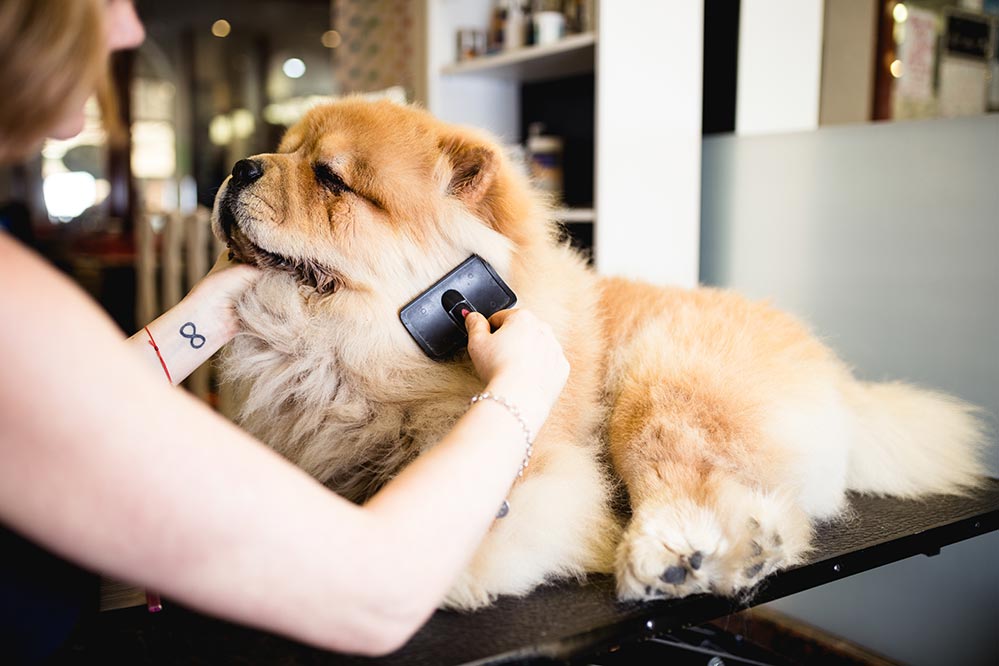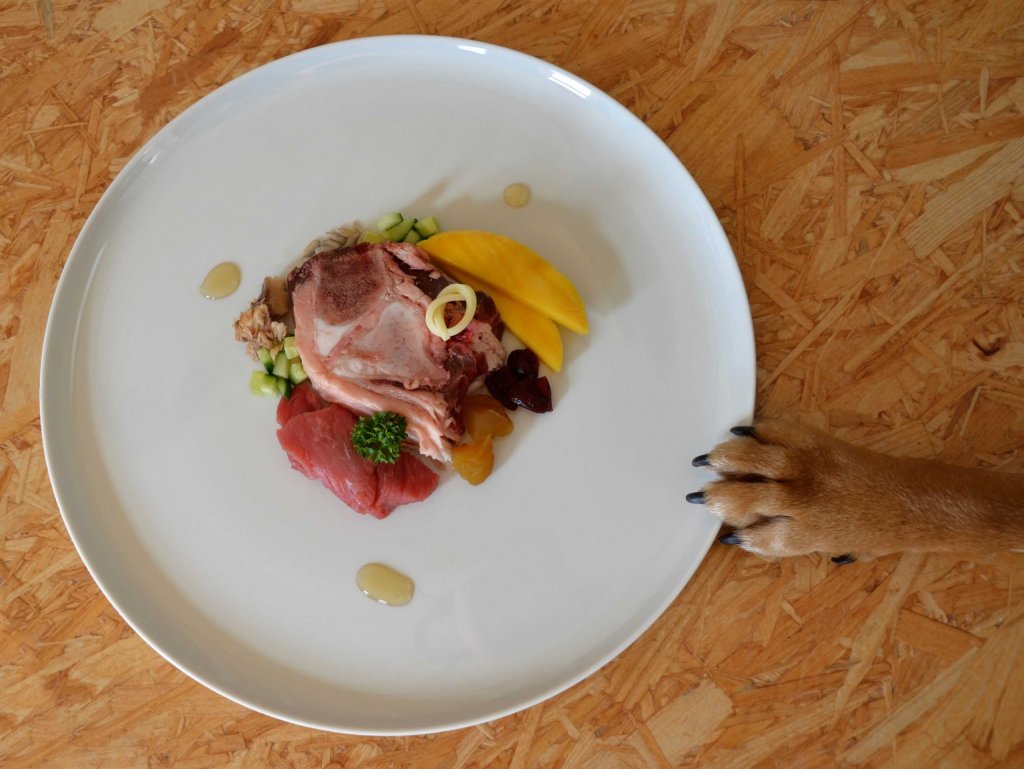Dogs typically shed their winter coat in the spring and grow new, summer-appropriate ones that are lighter and shorter. This cycle is reversed in the fall as the summer coat is shed to make room for the thick, protective fur of the winter. The “double-coated” breeds, such as collies, shelties, and keeshonden, show the most noticeable change. These breeds have both a harsh, insulating undercoat and a long, protective overcoat, and they shed a lot of fur in the spring and the fall.
The amount of shedding varies widely from breed to breed. For instance, German shepherds consistently shed a lot of fur, whereas poodles appear to lose very little fur. Even though many short-haired dogs shed more than long-haired dogs do on average, because their hair is more noticeable, it can appear as though they shed less.
A regular and frequent schedule of bathing, combing, and brushing can control all shedders, even the heaviest ones. After all, while grooming your pet, the fur you grab won’t end up on rugs or furniture.
Ask a breeder for grooming advice if you have a purebred dog or a dog with characteristics of a purebred, especially with regard to the right kind of grooming tools. The slicker brush that works well on a poodle won’t get very far through a full-coated collie’s thick mane during a season of heavy shedding.
A curry comb or hound glove will work well for a dog with short hair, catching the short fur before it lands somewhere else.
Although seasonal heavy shedding is common in all breeds, some heavy shedding can be an indication of health issues. Poor nutrition can also result in coat issues, and skin allergies, hormonal imbalances, and skin parasites can all cause shedding.
Learn about your pet’s typical shedding schedule, and seek advice from your veterinarian if your pet’s coat appears dull or if you notice areas of complete hair loss or excessive overall hair loss.
Other fall pet-care tips: • Cold-weather cautions. Examine your pet’s health, age, level of activity, weight, and make any necessary adjustments for the cold. Pets who spend more time outdoors generally require more food because keeping warm requires energy, of which food is the fuel, whereas pets who spend more time indoors typically require less food to compensate for a decrease in activity. Don’t forget about shelter, and make sure your pet has access to non-frozen water at all times. Heated beds, whether indoors or outdoors, are also a good idea, and pet supply stores offer a variety of models.
• Special care for older animals. Cold weather is especially tough on older pets. It’s not absurd to assist elderly animals by covering them with a sweater when they go outside. Numerous pet supply stores are available, or you can make your own out of children’s clothing from a thrift shop.
Why is my dog shedding so much?
It makes sense that various breeds have various coat types, both in terms of length and texture, and that these various coat types would shed in various ways. Here are some of the basics.
Coat Layers:
Coat Length:
Coat Texture:
Natural shedding occurs in dogs for a few different reasons. Most dogs shed throughout the year to get rid of their worn-out or damaged fur, but the amount and frequency of their shedding depends on a variety of other factors as well, including the layers, length, and texture of their coats. Dogs often shed according to season, too. For instance, some dogs develop thicker coats during the winter to keep warm. When it becomes unnecessary in the spring, the extra fur is then shed.
Diet and health can also impact a dog’s shedding. In addition to making your dog sick, a poor diet deficient in fresh meats, fruits, and vegetables can result in a coat that lacks vigor and strength and sheds more frequently.
While the majority of shedding is completely normal and shouldn’t cause concern, there are a few things to watch out for. The loss of fur, which can resemble shedding, may be a sign of a health problem, such as hypothyroidism or even Cushing’s disease. Consult your veterinarian right away if your dog’s fur has changed in texture, is shedding, thinning, or is coming out in patches, if there are any additional skin issues, or if your dog seems sensitive to touch.
Although most dogs shed all year long, there are some seasons when it might be more noticeable. In order to keep warm, your pup may develop a longer coat that is shed in the spring and replaced by a lighter one for the summer. Then, in the fall, that summer coat is once more shed and replaced with a heavier winter coat.
Clubs Offering:
Different dog breeds shed differently: some only occasionally, while others do so constantly. This depends on the type of coat your dog has. For instance, a Golden Retriever has a thicker double coat and is therefore more likely to shed all year long.
You’ll notice that the majority of shedding in dogs that have seasonal hair loss happens in the spring and fall. Your dog’s coat will lighten in the spring in anticipation of the warmer weather. Similar to how you will notice a change in your dog’s coat and more shedding in the fall as they get ready for winter.
It’s important to brush dogs who shed frequently; this may be done once a week, several times a week, or even daily during periods of heavy shedding.
Regular brushing and grooming are still important for your dog, even if they don’t have a lot of hair to shed, but how often you groom them will depend on their coat.

Feed a high-quality diet
Dogs, like humans, require the proper ratio of minerals and vitamins to stay healthy. They could exhibit signs like hair loss if they don’t get enough essential nutrients. For instance, copper or zinc deficiency can result in canine hair loss. By giving your dog a nutritious diet, you can ensure that they are getting these minerals.
Prefer high-quality food and choose meat-rich and grain-free food. This type of food is simpler to digest, so your dog won’t have any issues with it.
Healthy dog foods help control shedding and dry skin while also promoting better health.

Dogs with food allergies are prone to diet-related shedding. If your dog suffers from food allergies, try a variety of foods and consult your veterinarian. Introduce a small amount of fatty acid-rich olive or flaxseed oil. You will enhance your dog’s overall coat texture by doing this.
FAQ
What months do dogs shed the most?
You’ll notice that the majority of shedding in dogs that have seasonal hair loss happens in the spring and fall. Your dog’s coat will lighten in the spring in anticipation of the warmer weather. Similar to how you will notice a change in your dog’s coat and more shedding in the fall as they get ready for winter.
Why is my dog shedding so much at the end of summer?
Some animals blow coat once more in the fall to get ready for the development of new underlayers that keep them warm in the winter. Therefore, despite the fact that it may seem like your dog sheds a lot during the summer, it’s probably just normal for their coat.
Do dogs shed a lot at the end of summer?
The short answer is that it depends on a variety of factors, but your dog may shed more during the summer. How much fur you might find on your floors depends on many factors, including the type of fur, the local climate, seasonal skin irritation, and grooming practices. Even though the natural shedding process cannot be stopped, there are some things you can do.
How long do dogs shed their summer coat?
Depending on the breed, anticipate having piles of fluff for approximately 2-4 weeks each season. For healthy, double-coated dogs, blowing coat is typically normal, but if you feel it’s excessive or notice skin rashes or behavioral changes, speak with your veterinarian right away.